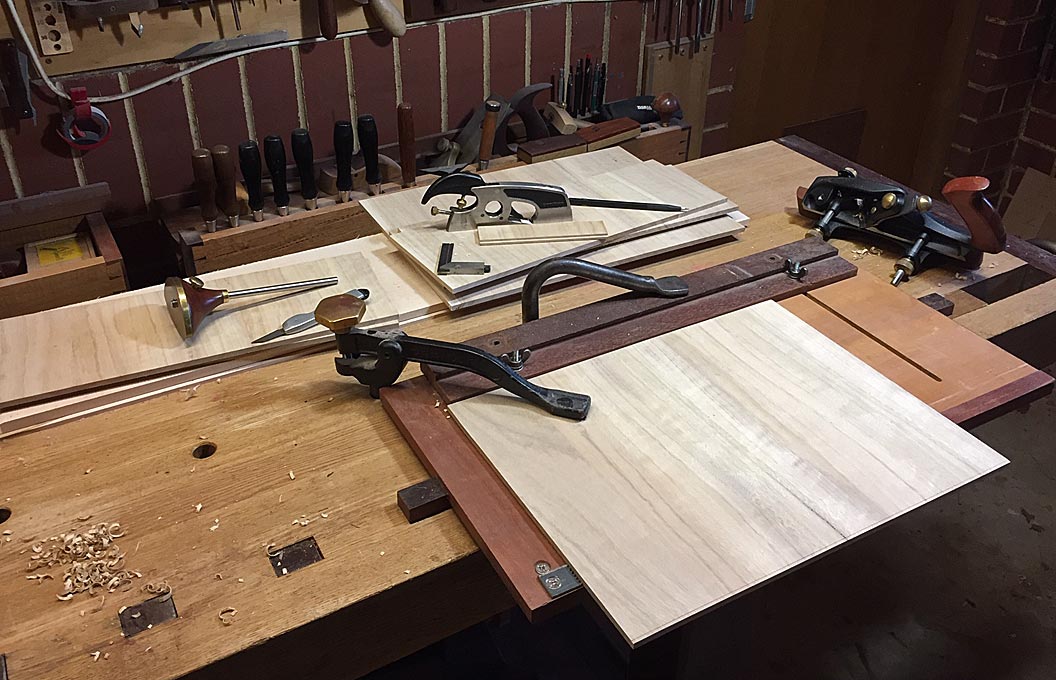Joel, I am going to appear very snooty when I say that that video and method by Becksvoort is a poor example of dovetailing and preparing a drawer. I simply cannot imagine that drawer fitting anything but loosely.
He does not saw to lines but leaves some to pare away with chisels. His chiseling is sloppy. He may be a whole lot better at using a belt sander - and possibly the only one to use this method - but the method must round over edges. The drawer looks reasonable from 6 foot. (A very good driend of mine, Chris Vesper, who is one of the best woodworking tool makers in the world, said to me that he was very disappointed by Becksvoorts drawer fit. Now I know why).
I don’t claim to be a professional, and I am not under the same time constraints, but I have friends who are high-end pros, and my drawers are up to their standards. It is not a race for me. Perhaps it is unfair, then, to compare how I do it with Becksvoort, who is working against the clock. The point is, you are not a professional doing the same either. There is no need to take shortcuts. What do you want to see when you look back on the work in a few years - a piece reflecting quality, or a memory of winning a speed race?
Becksvoort’s approach to marking out is very different to my own. If you want to watch videos of a style and method that I would support, watch Rob Cosman. In my own work, there is usually no waste to plane or pare away. This is deliberate. When fitting drawer fronts for a close fit, one does not want to alter their dimensions later (in this case with a belt sander - ugghh!).
I recently posted on the WoodCentral forum a series of links (on my website) for drawer-making. This may interest you, if only to give you an idea of what goes into the making of piston-fit drawers …
https://www.woodcentral.com/home/for...6373#gsc.tab=0
Regards from Perth
Derek










 Reply With Quote
Reply With Quote

